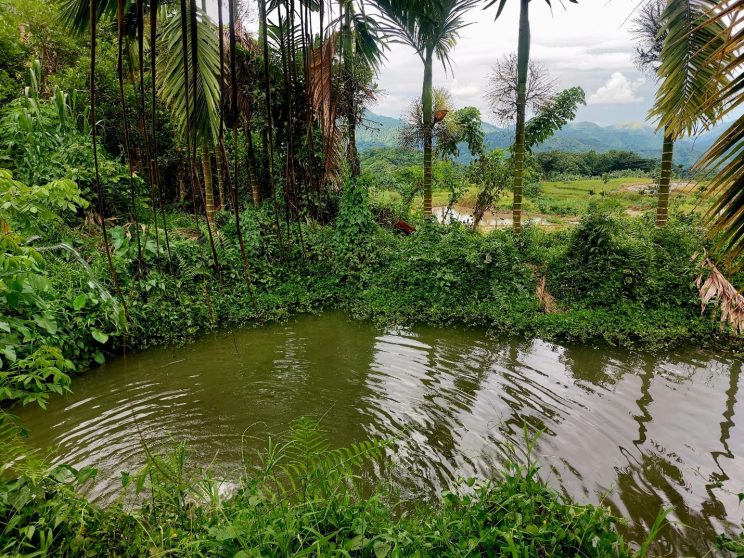Beyond Earth Month itself, many farms are already practicing regenerative agriculture for the sake of healthier people and environment.
Earth Month is an annual celebration every April, highlighting the importance of environmental movement in achieving a more sustainable future for the planet.
Regenerative agriculture is an emerging movement from conventional agricultural practices to more resource-efficient and environmentally conscious ones. It consciously aims to reduce the use of water and other inputs and prevent land degradation and deforestation. It improves soil, biodiversity, climate resilience, and water resources while making farming more productive and profitable.
Here are some local farms that are taking regenerative agricultural practices into their day-to-day activities:
Terra Grande Farms

Close-up of the herd happily eating grass in the pasture area. (Ruel Silvano)
Terra Grande Farms is a goat farm in Negros Occidental that raises Anglo-Nubian goats and upgraded Philippine native goats. The goats are raised as naturally as possible using semi-intensive management, and it also hosts a nursery for agroforestry. The farm is known for its various regenerative agricultural practices in raising goats, such as rapid rotational grazing systems, silvopasture, keyline design principles, permaculture, and even agroforestry. With the sustainability concept at the center of its operations, the farm also has more than 50 kinds of high-value crops.
Raskin Timmangao’s Farm

A pond where Timmangao grows an expensive aquatic species locally called chalet, the same type of eel being popularly consumed in Japan. (Daniel Jason Maches)
Considering indigenous farming and sustainability, the Raskin Timmangao’s Farm was started by Arnold Timmangao by planting native trees in heavily denuded land in Natonin, Mountain Province. The area that was previously landslide-prone and with virtually nonexistent wildlife is now an integrated agroforestry farm that acts as a rainforest, while raising high-quality Arabica coffee beans, such as Mondo Novo and Bourbon. In a bid to create a more productive, yet sustainable ecosystem, Timmangao also planted different fruit trees such as durian, rambutan, and cacao. The farm is also home to native vegetation, including swamp gabi, to grow on the site.
La Granja de Reyna

View of La Ganja de Reyna farm atop a hill. (Daniel Jason Maches)
La Granja de Reyna, located in Tacloban City, Leyte, is known for growing a variety of crops cultivated organically and even has an organic-integrated farm certification. When it was established in 2010, the farm first produced legumes, kangkong, cabbage, and mustard. With an agricultural engineering background, the farm owner, Martina Reyna, was able to craft farming practices that are organic and regenerative, especially after the onslaught of Typhoon Yolanda in 2013. The farm's kangkong also became one of the food sources for many typhoon victims in Leyte after. The farm highlighted the importance of collaboration and consideration of regenerative practices to ensure that the farm's ecosystem can fully recover after a disaster, such as a typhoon.
These are just some examples highlighting the vital role of considering the environment in making farms more profitable and sustainable. There are still many farms taking the idea of Earth Day into their day-to-day operations, ensuring a more sustainable future for all. This Earth month, it is important to remember the farmers who are taking care not just of the world's food and other raw materials supply, but also help in taking care of the planet's environment.
No comments:
Post a Comment